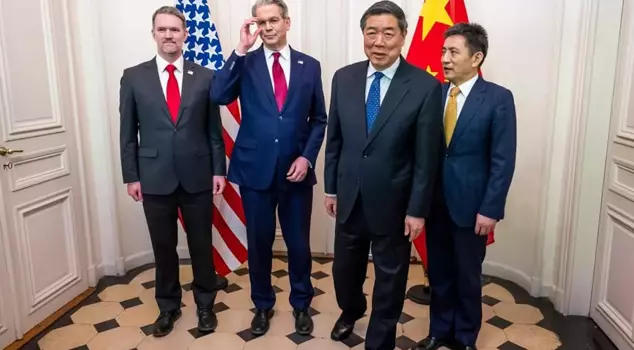
11.06.2025 13:40
The United States and China have agreed on a framework deal aimed at reviving the trade truce and lifting export restrictions on critical minerals. However, as deep disagreements persist regarding permanent solutions, the parties have until August 10 to reach a comprehensive agreement.
U.S. and Chinese officials announced yesterday that they have agreed on a framework to restore the trade truce and lift China's export restrictions on rare earth elements. However, according to comments in the U.S. press, there were not many signs in the agreement that the long-standing trade disputes would reach a permanent solution.
After two days of intense negotiations in London, U.S. Secretary of Commerce Howard Lutnick stated to reporters that this framework agreement is a concrete manifestation of the consensus reached last month in Geneva, which aimed to alleviate the mutually "overwhelming" three-digit tariffs. However, the Geneva Agreement was disrupted due to China's ongoing restrictions on the export of critical minerals. This situation led the Trump administration to implement its own export controls that hindered the shipment of semiconductor design software, aircraft, and other products to China.
"IF APPROVED, WE WILL IMPLEMENT THE FRAMEWORK"
Lutnick said that the agreement reached in London would lift some recent U.S. export restrictions, but he did not provide details as the talks ended around midnight London time. Lutnick stated, "We have agreed on a framework to implement the Geneva consensus and the discussion between the two presidents. Our goal is to meet with President Trump and get his approval, while the other side will meet with President Xi to get his approval. If approved, we will implement the framework."
THE PARTIES AGREED ON A TRADE FRAMEWORK
Lutnick also mentioned that China's restrictions on the export of rare earth elements and magnets to the U.S. would be resolved as a "core" part of the framework agreement. Lutnick said, "When those rare earth elements did not come, the United States had taken some measures. You can expect a balanced lifting of these measures." Chinese Vice Minister of Commerce Li Chenggang also stated that the parties had agreed in principle on a trade framework, which would be presented to the leaders of the U.S. and China.
According to reports in Western media, this framework could prevent the complete breakdown of the Geneva agreement due to mutual export controls. However, it does not make much progress in resolving the differences regarding Trump's unilateral tariffs and the long-standing complaints of the U.S. about China's state-supported, export-oriented economic model. Accordingly, the parties have until August 10 to negotiate a more comprehensive agreement that would ease trade tensions; otherwise, tariffs will rise again, increasing from about 30% to 145% on the U.S. side and from 10% to 125% on the Chinese side.